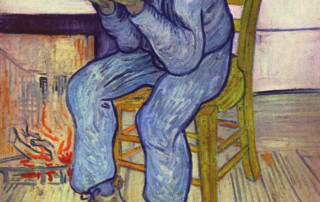I got a lot of feedback about my previous post on what not to say to a depressed person. I, myself, realized, after I finished writing, that my list seemed to eliminate most of the seemingly helpful things people actually say to depressed people, along with some of the more useless pieces of advice. So, have I thrown the baby out with the bathwater? I don’t think so, but let me explain. The purpose of the list was to describe, for people who don’t suffer from depression, what the mind can do to even objectively harmless and pro-social encouragement when it is weighed down under a cloud of darkness. The most positive and encouraging sentiments are quickly corroded in the acid bath of negativity, rendering them unhelpful at best and harmful at worst. This naturally leads to the question, “So, if I can’t even tell them that I love them, what can I say to them?” Check out this list of suggestions: 1. That must feel terrible… I’ve written before about the importance of validation, especially when it comes to getting someone to listen to your perspective. Much of the usual feedback given to depressed people is intended to be […]
10 Things Not to Say to Someone Suffering From Depression
Depression is no joke. Which is ironic, given how many people mask it with humor, as the recent case of Robin Williams sadly demonstrates. I find it sadly amusing how many experts there are out there when it comes to dealing with the complex interplay between, society, psychology, and our internal biochemistry. Most of these experts are more than willing to share their homespun advice for the rest of us but the reality is that when it comes to helping someone who suffers from major depressive disorder, it’s rarely that simple. For example, try to avoid these common well-intentioned, yet potentially harmful pieces of wisdom: 1. Cheer up This is not useful advice. It’s like telling a sick person to be healthy. If that were possible, they wouldn’t be sick in the first place. Also, you don’t know the reasons behind the depression. Someone once tried to encourage a client of mine to smile more, seeing only their downcast face and negative body language. What they didn’t realize is that this person’s child had just committed suicide. “Cheer up” is an imperative that no one has the right to issue. 2. You Just Need to Find a Hobby To quote […]
Playing Dead Emotionally: How Numbing Your Pain Can Be a Curse (and a Blessing)
Fight, Flight and … Freeze? Most people have heard of the “fight or flight” response. It is the body’s naturally hard-wired way of dealing with threats to one’s safety. I have written about it before, a few times, so I won’t go into it again but today I’m going to mention the third part of this response: freeze. In nature, animals typically go to flight first, since they are free of ego and have nothing to prove, only to enhance their own chances of survival. If they can’t go to flight and escape danger, they will go to fight, posturing and growling in hopes of scaring off the threat. If this fails, they will actually engage in aggressive behavior, albeit defensive aggression. Once these two options are unsuccessful, or if they are unavailable, most species have a form of reflexive behavior that could be termed “playing dead”. Playing Dead Emotionally Since most of the threats people face in our neck of the woods are social or emotional (although many do face actual physical threats in many forms), the freeze response may look a bit different than it does for a possum or cat. In our case, we tend to play […]










Recent Comments